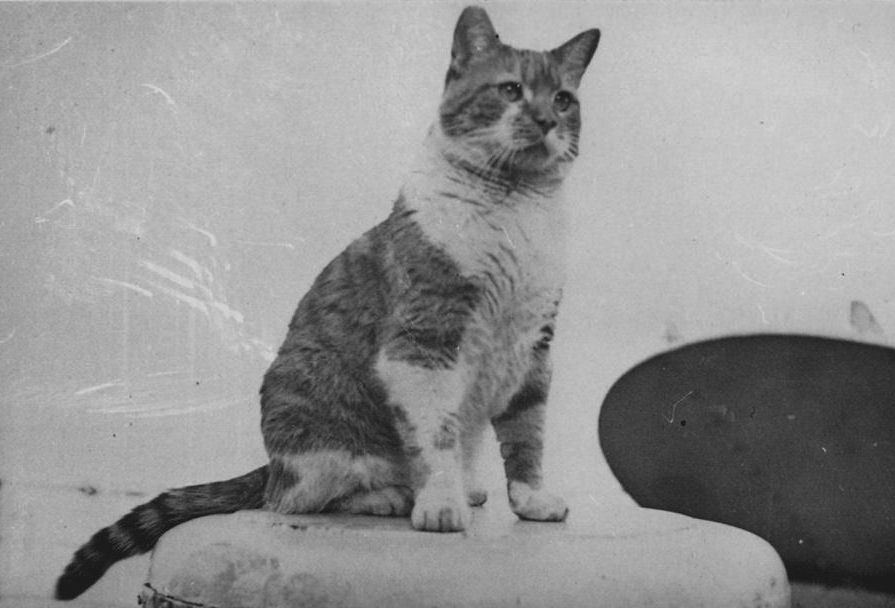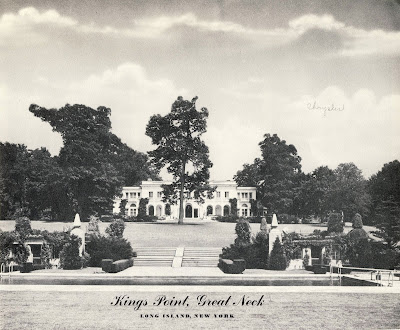
In January 1946, the United States partnered with the American Express Company and other shipping and custom house brokers to help American servicemen ship their European canine companions to America. By the end of February 1946, about one thousand dogs had been shipped to the states as part of the joint venture unofficially known as Operation Bow-Wow.
One lone tabby cat reportedly joined their ranks.
On February 20, 1946, the Liberty ship SS Warren P. Marks arrived at Chelsea Piers (Pier 60) on the Hudson River carrying 81 dogs and “one live cat from Bremerhaven, Germany.” The dogs and cat had all been obtained overseas during World War II by American soldiers who wanted to keep them as pets back home.
According to the American Express Company, it cost the soldiers $50 to $75 to ship their pets to the United States as part of Operation Bow-Wow. (That was quite a hefty sum to pay, considering some of the mixed-breed dogs were valued at less than a dollar.)
In some cases, the shipments were arranged by friends or other soldiers who were still overseas after the pets’ masters had already returned home.
The Story Behind the Ship of Operation Bow-Wow

New Jersey resident Warren Prime “Moose” Marks was the oldest child of Sylvester Wade Marks and Arabella “Belle” Florence Prime Marks. He had one sister, Annis Jean, and a brother, Roger. Warren attended public schools in Nutley, N.J., and graduated from Nutley High School in January 1941.
On December 11, 1942, when he was just a first-year cadet in the U.S. Merchant Marine Academy, Warren signed on aboard the SS Timothy Pickering as Engine Cadet at the port of New York. He was joined by cadets Christopher C. Brennan (Deck), William L. Lyman (Deck), Lawrence D. McLaughlin (Engine), and former Cadet Officer George W. Alther, Jr. (Second Mate).
Seven months later, Marks and his fellow cadets lost their lives when their ship was attacked by German dive bombers in Avola, Sicily.
On or around July 10, 1943, the Timothy Pickering arrived off Avola after sailing in a convoy from Alexandria, Egypt, with 130 British soldiers and a cargo of munitions, TNT, high-octane gasoline, artillery pieces, and trucks. On the morning of July 13, the vessel was anchored in the harbor, where the crew had begun unloading the vessel’s cargo.
In a sudden attack, a German dive bomber dropped a 500-pound bomb on the ship at its Number 4 hold.
According to a report from Deck cadet Christopher Brennan, one of only 29 survivors, the bomb detonated in the ship’s engine room, causing a massive explosion that left a gaping hole in the starboard side and nearly sliced the ship in two. As the aft section of the ship began quickly sinking, and with no time to either launch lifeboats or be given an order to abandon ship, the crew began leaping over the side into the water or sliding down ropes and the anchor chain.
“To stunned observers nearby,” the report notes, “the doomed ship seemed to dissolve into thin air.”
According to Brennan’s report, Warren Marks was in the engine room at the time of the explosion, and was killed instantly. William Lyman was in his quarters and was not seen afterward. Lawrence McLaughlin was seen jumping over the side of the ship, but drifted into the burning oil that surrounded the blazing ship.
Along with the Cadet-Midshipmen, 19 other crew members, 8 Naval Armed Guard Sailors, and 100 British soldiers died in the attack.
Second Mate George W. Alther, Jr., only 25 years old, was posthumously awarded the merchant marine’s highest honor, the Distinguished Service Medal, for his heroic actions during the disaster.
Cadets Lyman, Marks, and McLaughlin were awarded the Atlantic War Zone Bar, the Mediterranean-Middle East War Zone Bar, the Combat Bar, the Mariners Medal, and the Presidential Testimonial Letter. Marks, just 20 years old when he was killed, also received the Victory Medal.
The U.S. Merchant Marine Cadet Corps
The U.S. Merchant Marine Cadet Corps was established by Congress under the Merchant Marine Act of 1936 and officially founded March 15, 1938, under the auspices of the U.S. Maritime Commission, chaired by Joseph P. Kennedy (father of President John F. Kennedy). Early training was provided at temporary facilities and aboard government-subsidized ships until the Academy’s permanent site at Kings Point, Long Island, was established in 1942 on the former Chrysler estate.
The Academy was dedicated on September 30, 1943, by President Franklin D. Roosevelt, who noted that “the Academy serves the Merchant Marine as West Point serves the Army and Annapolis the Navy.”
In 1941, when Warren Marks joined the Academy, the requirements for appointment as cadet were:
-American citizen between 18 and 25
-Good moral character, unmarried
-Between 5’4″ and 6’4,” in height
-Meet Navy physical requirements
-Meet requirements for sight, color perception, speech and hearing
-At least 15 high school credits
-Good teeth, good feet, good posture
From 1942 to 1945, the Academy graduated 6,895 officers. As the war came to an end, plans were made to convert the Academy’s wartime curriculum to a four-year, college-level program to meet the peacetime requirements of the merchant marine.




